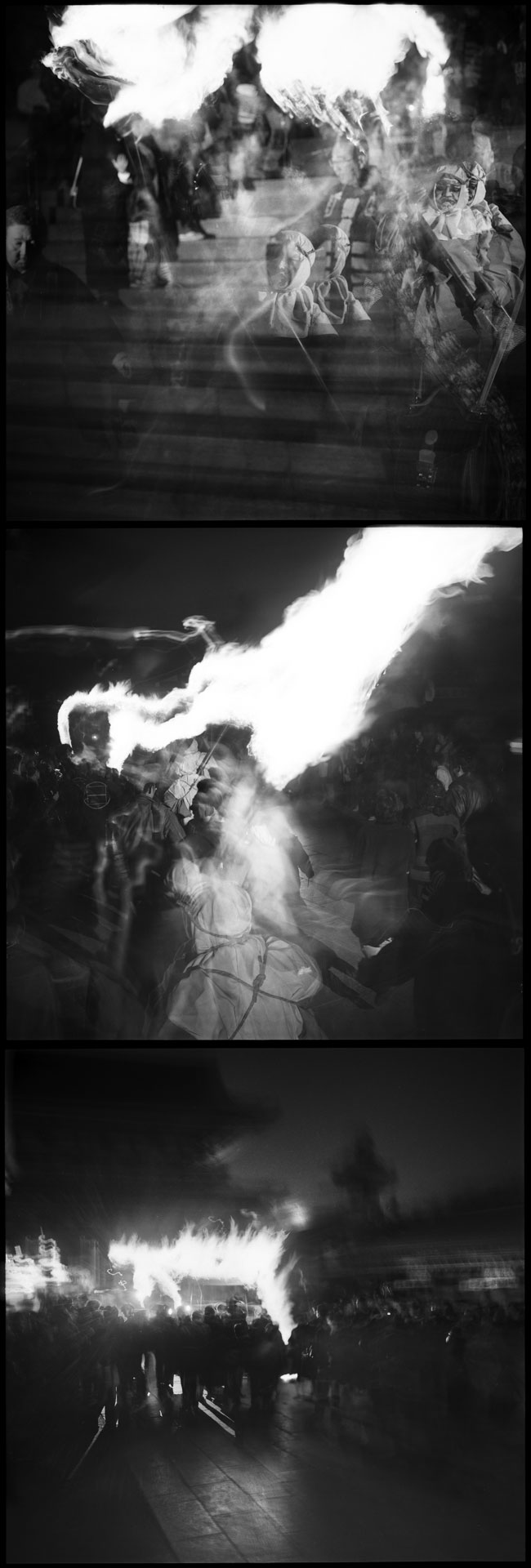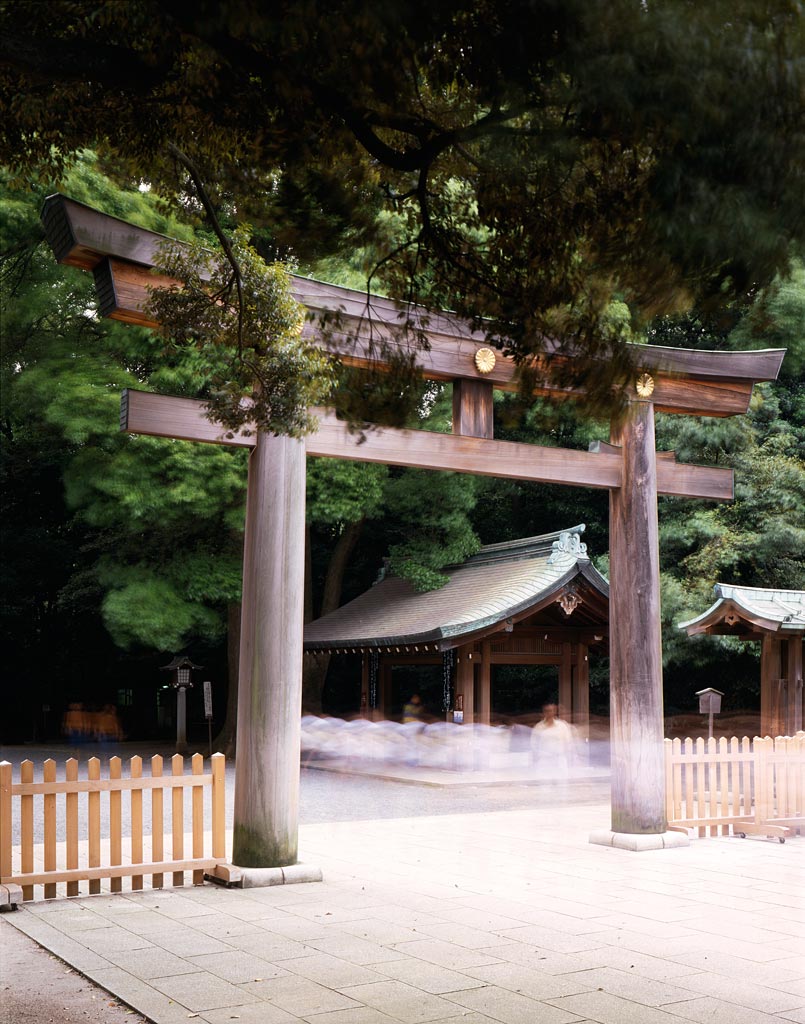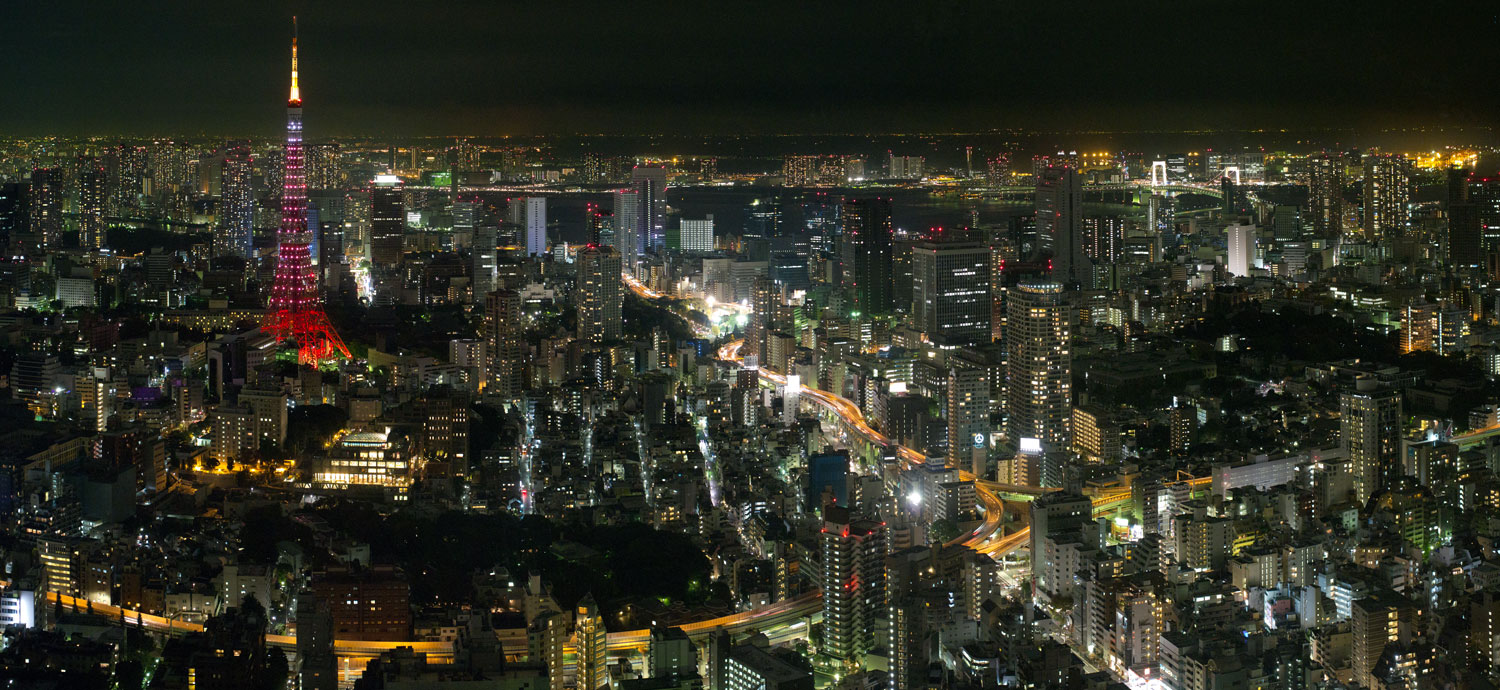 Moja-okuri is a rite that signals the end of the New Year celebrations in Japan. This ritual takes place on January 18th at Senso-ji, also known as Asakusa Kannon Temple in Tokyo.
Moja-okuri is a rite that signals the end of the New Year celebrations in Japan. This ritual takes place on January 18th at Senso-ji, also known as Asakusa Kannon Temple in Tokyo.
After dark, the lights are turned off in the temple grounds. It is pitch black. Two priest dressed as demons and carrying flaming torches run out of the main hall and through the precincts. They leave the temple grounds and go to a nearby site where the torches are extinguished in a small pit. The whole event is over in five minutes.
The priests represent evil spirits—one red, one blue. If the sparks from the torches fall on you, it is believed you will have good health throughout the year. People collect the ashes that fall from the torches as good luck charms.






